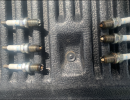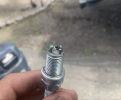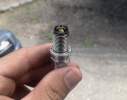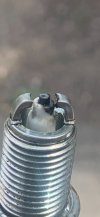Paul_A
Well-Known Member
- Joined
- Feb 25, 2019
- Messages
- 144
- Reaction score
- 43
- Points
- 28
- Model
- Adventure
post # 18, yes I hope you were in neutral as the 2-3 were not firing. I don't believe 875 is too high in neutral in the water because it will drop some in gear. You said you did a sync and link? Is important on that motor as well.
Timing. It doesn't seem like 14 vs 17 btdc would matter until you think about how fast the piston is moving, the air fuel mixture needs to fire at the correct time and those 3 degrees could be part of the problem.
I wouldn't chase anything else until I adjusted the timing to within specs and verified that all 6 have good compression.
Your manual needs to tell you how, I can't remember, been 8 years since I sold mine.
Timing. It doesn't seem like 14 vs 17 btdc would matter until you think about how fast the piston is moving, the air fuel mixture needs to fire at the correct time and those 3 degrees could be part of the problem.
I wouldn't chase anything else until I adjusted the timing to within specs and verified that all 6 have good compression.
Your manual needs to tell you how, I can't remember, been 8 years since I sold mine.





